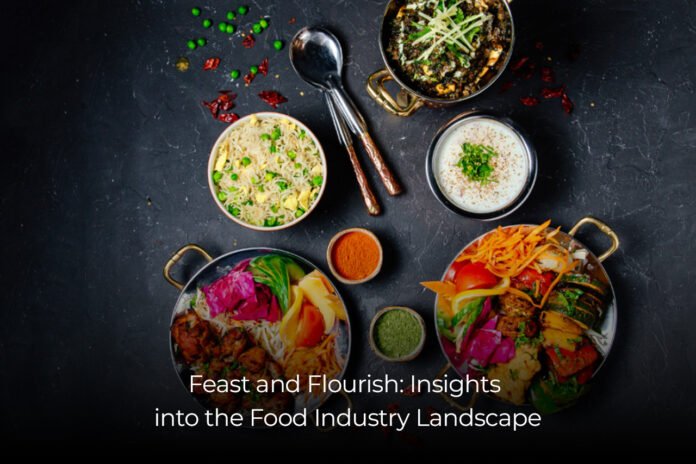Feast and Flourish: Insights into the Food Industry Landscape
The food industry is a dynamic and ever-changing landscape, shaped by various factors such as consumer preferences, technological advancements and global trends. In this blog post, we will examine some key insights that shed light on the current state of the food industry and its future prospects.
1. Changing Consumer Preferences
One of the most important drivers of change in the food industry is changing consumer preferences. Today’s consumers are more health-conscious and environmentally conscious than ever before. They are looking for healthy and sustainable food options, demanding transparency in the supply chain, and looking for products that align with their values.
This shift in consumer preferences has led to the rise of plant-based and alternative protein products. As more and more people adopt vegetarian, vegan, or flexible diets, the demand for meat alternatives is skyrocketing. Companies in the food industry are capitalizing on this trend by developing innovative plant-based products that mimic the taste and texture of meat.
Additionally, consumers are increasingly concerned about the environmental impact of their food choices. They are gravitating towards brands that prioritize sustainability and ethical sourcing. This has created opportunities for companies to promote their eco-friendly practices and differentiate themselves in the market.
2. Technological Advancements
Technology has revolutionized every aspect of our lives, and the food industry is no exception. From farm to fork, technology is being used to improve efficiency, quality and safety in food production and distribution.
One area where technology has made significant strides is precision agriculture. Farmers can now use sensors, drones and data analytics to monitor crop health, optimize irrigation and reduce pesticide use. This not only improves production but also reduces the environmental impact of farming.
In addition, advances in food processing and preservation techniques have extended the shelf life of perishable products. It has facilitated global food trade and enabled consumers to enjoy a wide variety of fresh produce year-round.
Additionally, technology has changed the way consumers interact with food. Online food delivery platforms are becoming increasingly popular, allowing people to order food from their favorite restaurants with just a few taps on their smartphones. This has created new opportunities for restaurants and food and beverage businesses to reach a larger customer base and streamline their operations.
3. Global Trends and Opportunities
The food industry is not immune to global trends and geopolitical developments. As the world becomes more interconnected, cultural exchange and globalization have influenced the way we eat.
A notable trend is the growing interest in international cuisine. People are becoming more adventurous in their food choices and are willing to try cuisines from different cultures. This provides opportunities for food businesses to introduce exotic flavors and ingredients to the market.
Additionally, the rise of social media has played a major role in shaping food trends. Instagram-worthy dishes and viral food challenges have become the norm, fueling the demand for visually appealing and shareable dining experiences. Restaurants and food entrepreneurs are capitalizing on this trend by creating unique and photogenic dishes that grab attention on social media platforms.
Moreover, the COVID-19 pandemic has had a profound impact on the food industry. Lockdown and social distancing measures have forced restaurants to adapt and innovate. Many establishments have moved into takeout and delivery services, while others have adopted ghost kitchens or virtual restaurants. The pandemic has accelerated the digital transformation of the food industry and highlighted the importance of flexibility and agility in the face of unexpected challenges.
In Conclusion
The food industry is a dynamic and ever-changing landscape, driven by changing consumer preferences, technological advances and global trends. As consumers become more health conscious and environmentally conscious, companies in the food industry are adapting by offering plant-based and sustainable options. Technological advances have improved efficiency and quality in the supply of whole foods, while global trends have created opportunities for culinary exploration and innovation. With the right strategies and a deep understanding of these insights, businesses in the food industry can thrive and thrive in this dynamic landscape.




